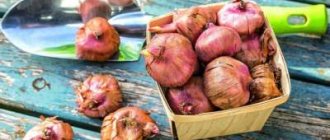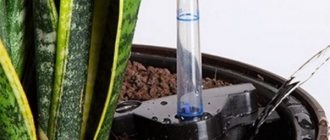Silver cineraria (Centaurea cineraria) is a small plant of the Asteraceae family native to the island of Capraia in Italy, where it is called fiordaliso delle scogliere. Mature plants grow from 15 to 60 cm, prefer good sun but tolerate light shade, and grow well in well-drained soils.
Cineraria produces small white or yellow flowers in the summer, but is mainly valuable for its unique silver-gray foliage , which appears to be covered with a thin layer of dust or flour. Depending on the climate, it can be grown as an annual or perennial plant.
A very popular plant that is propagated to form landscape designs in various climatic zones, as well as to decorate the interior of an apartment or office. The beautiful leaves of the plant are soft to the touch, some varieties are rounded, others have sharp tips. Most often, silver cineraria is grown in flower beds, along borders, in containers, hanging pots or as house plants.
The plant spreads along the ground; one bush can reach a length of up to 2 meters. Mostly yellow flowers appear only in the second year of life, but they are deliberately removed, since gardeners breed this plant solely for its foliage. Depending on the growing climate, cineraria flowers appear between December and March (some varieties bloom in June).
Note! The juice of the plant is often used to treat cataracts. But it is worth noting that cineraria is very toxic. The dusty miller loves full sun, moderate watering and tolerates heat and drought quite easily.
Reproduction, planting and transplantation of cineraria
The methods of propagation of cineraria depend on its species:
- Flowering species reproduce exclusively by seeds.
- Decorative foliage species can be obtained from seeds and cuttings.
- Indoor cineraria can be propagated by seeds and by dividing the bush.
Sowing of seeds of flowering species occurs from December to February. If the seeds were sown in February, the flower will release buds only closer to autumn.
The decorative deciduous species can be sown even in March. Then in May the flower will take on the appearance of a beautiful bush.
Growing from seeds involves the following steps:
- For flowers, select a wide, shallow container with good drainage holes.
- For seeds, prepare special soil consisting of peat and sand in equal proportions.
- The seeds are carefully distributed over moist soil, leaving a distance of about 2 cm between the seedlings. Densely planted flowers will be difficult to pick. After distribution, they are lightly submerged. To do this, you can use a regular stationery ruler.
- The container is covered with film or glass. It is placed in a room with an air temperature of 20℃-22℃.
- Seedlings should be ventilated and the soil sprayed every day. The first shoots will appear after 1.5 weeks.
- The sprouts are planted in peat pots and moved to a cool room with a temperature no higher than 15℃.
- With the onset of stable warmth, the sprouts along with peat pots are transplanted to the site. In open ground they are cared for like adult plants.
Decorative deciduous varieties can be cut from:
- In summer, shoots about 10 cm in length are cut from the flower.
- For better rooting, before planting, they are treated with the drug Kornevin, which stimulates root growth.
- The cuttings are stuck into a damp sand-peat mixture under a cap. If such caps are not found on the farm, they can be replaced with cut-off transparent plastic bottles.
- The cuttings are ventilated and moistened daily.
- After rooting, the caps are removed.
- The shoots remain in sandy-peaty soil until spring.
- For the winter they are moved to a cool place.
- With the onset of warm weather, rooted cuttings can be planted in plots.
Cuttings
The indoor species can be propagated by dividing the bush; this is usually done during transplantation:
Using a sharp sterile instrument, the rhizome of the plant is cut into the required number of parts.
It is very important that each separated part has at least 1 strong stem. The damaged areas are treated with an antiseptic. Each part of the bush is placed in a separate pot.
Indoor flower replanting is carried out in the spring, before the budding process begins. The plant does not need to be replanted annually. It is enough to replace the soil every 2-3 years. The soil for the flower should consist of leaf soil, compost and peat. It is advisable to add a little pine bark and ash there. Medium-sized pots are selected for cineraria.
Garden flowers, which are grown as perennials, are transplanted into a pot every fall and returned to the plots in the spring. Before planting, the soil must be dug up, enriched with a small amount of peat, sand and compost. The holes for cineraria are made shallow, and the flowers themselves are planted at a distance of 20-25 cm from each other. After planting, the soil is abundantly moistened and mulched with peat.
It will also be interesting: Tradescantia Reo - flower care at home and types?
Common diseases
What problems may a gardener encounter when planting and caring for silver cineraria? First of all, it is rust, which occurs during severe drought and high humidity. The crop is also affected by powdery mildew, aphids and spider mites appear on it. Thanks to the dense pubescence, it is much easier to prevent infection than to try to fight pests and diseases.
White
To exterminate aphids and mites, systemic insecticides are used. If spots appear at the base of the bush, but the top is not affected, you can save the plant by cutting. To do this, root the top. When all the leaves and stem are affected, the crop is removed along with the roots and removed from the flowerbed. In general, all types of plants are resistant to diseases.
Preparing for winter
If cultivation from seeds is practiced in mid-latitudes, the plant is cultivated as an annual. That is, as soon as the crop fades, it is immediately removed. It is quite possible to preserve the decorative deciduous appearance until next year. To help the bushes survive the winter, they are covered with leaves. In spring the foliage is removed. It’s not scary if some parts of the plant still freeze. They are cut off to make room for the growth of young shoots.
Interesting! There is another way to grow cineraria for two years. In the fall, it is transplanted into a pot and placed in a cool, well-lit room. All that remains is to wait for spring and replant the flower in open soil.
Reproduction
Since our climate differs from the tropical one, cineraria has to be grown from seedlings. It is almost impossible to create ideal conditions for proper germination of seeds in open ground.
Note! The only variety that can be sown in the garden is cineraria graceana. Deciduous forms are propagated by cuttings, decorative flowering ones are propagated by seeds.
How to grow from seeds?
Seeds of silver cineraria (perennial or annual - depending on growing conditions) are purchased at a flower shop. Germination is usually not satisfactory. It is recommended to sow ashy ragwort for seedlings in April.
- Fill the container with a mixture of sand and peat in a 1:1 ratio.
- There is no need to deepen the seeds. It is enough to sow them on the surface and lightly tamp them with a wooden ruler.
- Using a sprayer, moisten the soil.
- Cover with glass.
Seedling care
The appearance of seedlings should be expected after 10 days. The container with the finished sprouts is transferred to a lighted place. As soon as 2 full-fledged leaves appear, make a pick. To do this, the plant is taken out of the container along with the soil and transplanted into a suitable container. A good option would be peat briquettes.
Before replanting the Cineraria Silverdust plant or any other species, choose a well-lit place in the garden bed. It is advisable that at noon there is light partial shade. Neutral soil, saturated with useful elements, is suitable. It is better to plant in mid-May, when the likelihood of frost is almost zero. The technology for planting in open ground and further care is almost no different from other plants.
The recommended distance is 20-25 centimeters. The bush is removed along with a lump of earth and placed in a hole. Then lightly compact the soil and water it. If there is still a chance of frost, cover the plants with spunbond overnight and remove them in the morning.
How to propagate by cuttings?
The seaside species is propagated by cuttings. Prepare a portable box, the so-called “cutting box,” into which the cuttings will be planted. It is made independently from boards and plywood, drainage holes are made.
Primorskaya cineraria
- The soil is garden soil mixed with sand. It is laid on the bottom 10 centimeters thick.
- The next layer is coarse sand, the recommended layer thickness is 6-7 centimeters.
- First, the surface is leveled and sprayed with a solution of potassium permanganate.
- Each section is treated with root and immersed in the prepared substrate. Lightly tamp, cover with a plastic bottle, which can be removed only after complete rooting.
- Water 2 times a day. Gradually remove the cover for 1-2 hours, and then forever.
- For the winter they are placed in a cool room - cellar, basement. In spring you can plant it in a flower bed.
Proper watering
One of the strengths of the culture is drought resistance. Thanks to this feature, cineraria (ragus) can be considered a real masterpiece for flower beds, public parks and gardens. Natural precipitation is often sufficient. But during periods of severe drought, the decorative value of plantings can be significantly reduced. The leaves turn yellow and wither. Since cineraria does not bloom so profusely without watering, additional moisture is recommended. It is desirable that it be at the roots, and the water should be warm and settled. Water between rows, loosen the soil and remove weeds.
Note! Of course, moderation must be observed. Too swampy soil leads to the appearance of fungus
The roots begin to rot and the bushes die.
Rules of care
In addition to watering and loosening the soil, it is recommended to regularly pick off wilted flowers. Then cineraria diamond powder will bloom much longer.
Do I need to feed the plant? Undoubtedly. Fertilizing is carried out 2-3 times a month, mineral fertilizer is used. If decorative flowering species grow in a flowerbed or in pots, they are fertilized more often - once a week. Alternate organic and mineral fertilizers.
How to plant?
When considering this crop for rooting in your garden, it is worth knowing some of the nuances regarding planting cineraria. In general, all varieties of ragwort adapt well and develop in any soil. However, the plant will feel best in soils enriched with useful microelements with good aeration, without stagnant moisture, which can lead to rotting of the root system.
Therefore, before planting, it is recommended to fertilize the selected area with mineral compounds intended for garden flowers. If you plan to plant several shrubs, then the holes for planting need to be prepared in increments of 20-25 centimeters, this also applies to the spaces between the rows. If you want to get a thick, continuous carpet of cineraria in your flowerbed, then the distance between the seedlings can be reduced.
The planting algorithm includes several steps.
- The required number of holes are dug in the area, with a depth greater than the root system of the plants selected for planting.
- Rooting involves placing the cineraria in the middle of the hole together with a clod of earth. At the same time, you should try to maintain its integrity.
- Next, the soil is compacted and the crops are irrigated.
- If planting is carried out during a period when night frosts are possible, care should be taken to provide shelter for the flowers at night. For these purposes, you can use any non-woven material, garden film.
The suitable temperature for the development of cineraria in open ground is +20°C. However, healthy plants that have already gone through an adaptation period after planting are able to withstand minor daily changes in thermometer values. The critical temperature for the crop will be +4°C and below. Under such conditions, the above-ground part of the plant will begin to die.
Cineraria - home care
Special rules have been developed for keeping cineraria in a pot and caring for seedlings and adult plants in open ground. It has been noted that good bud formation occurs at temperatures up to 12°C. At midday, sunburn may form on the foliage, so it is advisable to grow the plant in diffused light. For indoor forms, medium-sized pots are used. The soil is prepared from a mixture of peat, leaf soil and completely rotted compost.
Features of caring for cineraria flowers:
- When keeping a flower indoors, you need to humidify the air with devices or use open containers with water.
- The plant does not like fresh organic matter; the soil in the flower beds is prepared in the fall.
- In the spring, nitrogen fertilizers or mullein are applied, and on the eve of flowering, phosphorus fertilizers are applied.
- Fading inflorescences are cut back to the first leaf.
- You can shorten long retracted shoots on bushes.
- In open ground, use mulch to protect against drought.
- In the fall, the cineraria is removed or dug up and replanted in a pot; in winter, such bushes need to be kept at temperatures up to 15°C.
- In the South, cineraria can be grown as a perennial, covering the flowers from frost with spruce branches or other material.
Cineraria - transplantation after purchase
The problem of when to replant cineraria grown from seedlings must be solved in late spring. For indoor forms, soil made from sand, leaf and turf soil, mixed in equal proportions, is used. In stores they sell adult bushes in separate pots with a diameter of 10 cm with a large number of unopened buds. These flowers do not need additional replanting. When transplanting into a flower bed, the holes are placed at a distance of up to 25 cm. The earth is watered, compacted a little and covered with mulching material.
Cineraria - watering
An important question when growing cineraria in pots: “How to water capricious plants?” Water should be used that is settled and warm. We try not to wet the fuzzy leaves, so we pour the liquid under the root. In hot weather, watering can be done even twice a day, but do not let the water stagnate. To improve air exchange, we periodically loosen the soil. It is recommended to sprinkle the top soil with a thin layer of expanded clay, which helps to avoid drying out of the soil.
Cineraria diseases
The problem of why cineraria leaves wither can arise due to several reasons. A common disease of this flower is powdery mildew. Its occurrence is provoked by improper watering, which leads to an excess of moisture in the soil. It is better to remove infected cineraria from the flowerbed. The leaves of an indoor flowerpot may wilt if kept in a hot room with dry air. If flowers are affected by spider mites or aphids, then the plants need to be treated with insecticides.
Description
Cineraria is a herbaceous or subshrub plant. The culture has been growing for many years.
- The height of the bush is from thirty to ninety centimeters; it is mainly made up of branching stems that grow vertically upward.
- The root system is of the tap type, the main root is located deep in the soil.
- The leaves are found in different shapes: lyre-shaped, oval or pinnately dissected. Leaf blades are attached to the stems along their entire length. All ground parts are covered with pubescence in the form of short pile. This pile gives the plant its characteristic shade.
- Flowering according to the description of cineraria occurs in the middle of the first month of summer.
- The stems are covered with buds of red, snow-white, sunny or purple.
- The buds form basket-like inflorescences.
- You can distinguish between simple and double inflorescences.
- Flowering continues continuously until the first frost.
- Some inflorescences die off and are replaced by new ones, which explains the continuity. After pollination of flowers, capsule fruits are formed. They contain cineraria seeds. These seeds are extremely small, have an oblong shape, and their color ranges from dark brown to coal black.
Use in landscape design
This culture is in demand as the main background when creating various kinds of flower arrangements in the garden. Most often, silver bushes are rooted together with bright and flowering garden plants on alpine hills and in stone gardens.
Silver cineraria can also be used to create original patterns in large areas of the garden. The culture combines harmoniously with orange or red flowers.
Gardeners prefer to combine the whitish foliage of the shrub with bright colors; in addition, the culture beautifully complements delicate white or pink flowers.
In addition to group plantings, ragwort in landscape design is found as single plantings in the form of an openwork carpet, which will look laconic and attractive in the flowering phase, before and after it.
You can learn more about the rules for growing silver cineraria from the video below.
Reviews from gardeners
Nika
When I was still a student, studying at the university, I noticed a very attractive plant in the city flower beds. It framed flower plantings very effectively and looked noble and beautiful. And now I definitely plant cineraria, and this is it, on my site. Beauty!! Everyone likes it. At the same time, it is unpretentious.
Source: indasad.ru
Lara99
In our country, cineraria overwinters without problems, only in the spring they stand as if scalded, the frosts still disfigure them, and the hand reaches out to uproot them, but then they are refreshed, fluffed up, prettier, and bloom. And they say that they are annuals.
Source: forum.bestflowers.ru
Varieties
Among the available varieties of ragwort, it is worth highlighting the most popular ones.
"Silver will give"
Decorative crop, with a pronounced lacy appearance of leaves. Silver Dust are small bushes with dense pubescence that become more attractive as they grow. The green mass of the variety is carved, the culture will be velvety to the touch, and the color will be silver. The plant is very often used by amateur gardeners and landscape designers.
Cineraria bloody
A variety of universal type that requires special care, since the shrub goes through a rather long growing season. The decorative appeal of the plant is emphasized by small snow-white inflorescences with a red border. Planting of the crop is usually carried out in winter or early spring.
"Stelata"
A hybrid variety of ragwort. Cineraria bloody was used as the mother culture of this plant. Among the expressive differences of the new bush, it is worth highlighting a different color of the inflorescences - an indigo shade. On average, the shrub is capable of growing in height up to 70 centimeters, while the crop creates an attractive carpet of large leaves on the ground.
"Nana"
This shrub attracts gardeners due to the presence of beautiful inflorescences that look like chamomile. In addition, the decorative appeal is complemented by the color of the flowers, which are distinguished by a burgundy center and deep pink petals.
Growing cineraria from seeds
The best way to obtain a cineraria plant is to grow it from seeds. When to plant them depends on the climatic conditions of your region of residence.
To grow seedlings from seeds, it is better to purchase them in specialized stores. The seeds have a high germination rate.
Sowing can begin in the first days of April. To do this, you will need a container with a substrate - a mixture of peat and sand in a 1:1 ratio. The seeds do not bury the soil, but are left on the surface. After they are sown, the soil is slightly leveled with a small wooden ruler. The soil needs to be watered using a sprayer or by placing the container in a tray with water. The container with future seedlings is covered with glass on top.
A week later, the first seedlings already appear. At this time, the container should be moved to a well-lit place. After the young plants have thrown out 2 true leaves, you can pick them and plant them in separate pots. To do this, the plants are removed from the container along with a small lump of earth. Briquettes with a mixture of peat and humus are best suited as a substrate. It will be much easier to transplant them into open ground.
Caring for cineraria at home and in the open ground
Caring for flowering and decorative deciduous varieties is no different. In addition to standard care for cineraria, growing Silver varieties involves systematic pruning of shoots. Without pruning, the plant looks unkempt and neglected.
Lighting
Cineraria loves bright light. Such lighting is provided to her in the first half of the day, and after 12 o’clock it is shaded. The need is due to the detrimental effect of the midday sun on the flower: direct rays of the scorching sun hitting the plant lead to burns.
Cineraria can grow calmly in a darkened area, but in such conditions it loses its decorative appearance.
Garden flowers are planted in areas where the sun does not reach after 12. Indoor plants are placed on western and eastern window sills.
Temperature and humidity
The flower is very demanding in maintaining temperature conditions. Temperature surges are contraindicated for him. Despite the fact that the plant’s homeland is hot countries, cineraria prefers cool conditions. The optimal temperature for keeping it is considered to be from 15℃ to 18℃. In a hot room, the shoots of the flower droop and wither.
The critical minimum temperature for a plant is +5℃. In colder air the flower freezes. A prerequisite for growing Cineraria is a constant flow of fresh air. A flower does not live in a musty room.
Cineraria likes air with high levels of humidity.
However, the standard measure of increasing it in the form of spraying is not suitable due to the hairiness of the stems and leaves of the plant. You can only spray the air around the plant. To increase the level of humidity, indoor flowers are placed on trays with wet materials: pebbles, expanded clay.
They are also placed next to aquariums and household humidifiers. The soil around garden plants is heavily moistened to allow moisture to evaporate. It is necessary to water the soil away from the root so that the flower does not rot.
Watering and fertilizing
Cineraria requires abundant and regular watering. The indoor species is watered through a tray, draining excess water after a while. Garden varieties are moistened at the root more often, but in small doses. The optimal scheme for watering garden cineraria is as follows:
- growing season: 0.5 l every 2 days;
- bud formation and flowering period: 0.3 l every day.
For irrigation use soft, settled water. After moistening, the top layer must be fluffed. Indoor varieties must be periodically cleaned from dust. To do this, they are given a shower under warm running water.
After this procedure, excess moisture is removed from the leaves using a towel. You cannot leave a wet flower in the sun because of the risk of getting burned.
The plant is fed 2 times a month. Balanced feeding for cineraria involves alternating mineral fertilizers with organic ones. To do this, use complex mineral fertilizers for flowering plants (or for ornamental ones, depending on the type) and mullein. In spring, the flower needs an increased concentration of nitrogen, and during budding and flowering - phosphorus. When planting and replanting plants, compost must be added to the soil.
Preparing for winter
Caring for indoor cineraria in winter is no different from regular care. The only requirement is to reduce the air temperature to 10℃-15℃. With garden species the situation is different.
In areas with moderately warm winters, they are left in the open ground, well covered with coniferous spruce branches or dry fallen leaves.
The cover layer should be at least 15 cm. If the winter is expected to be harsh, the cineraria are transplanted into pots and brought indoors. They are cared for like indoor varieties. In spring, flowers are returned to the plots. Failure to comply with such measures leads to freezing of the plant.
Varieties popular in floriculture
From all the variety of subspecies of cineraria, we can distinguish several of the most popular varieties of seaside, which are cultivated in our country.
Silver dust
Silver dust bushes are small (about 15 cm high) and compact. The leaves are carved, reminiscent of lace, and have a cool silvery hue. Seeds are accepted in almost 100% of cases sown, the bush grows and develops quickly. Pairs well with pansies and other low-growing plants with bright flowers.
Variety Silver dust
Andromeda
Andromeda bushes are taller than other varieties; the height of the plant can be up to 40 cm. The leaves are carved, but the teeth are smoother. Young plants have bright green foliage, which over time acquires the silvery color characteristic of cineraria.
Andromeda bushes are taller than other varieties
Cirrus
One of the tallest shrubs of the silvery subspecies. The height can reach 45 cm. The leaves are oval, corrugated, resembling the leaves of young cabbage in appearance. The young bush has a pleasant mint color, but over time it becomes whitish-gray.
Cineraria variety Cirrus
Silver boat
The height of the plant is about 35 cm. The leaves are openwork, with a pleasant velvety structure, and a classic silver color. Excellent for growing in a pot.
Diamond powder
The difference between this variety is less dissected and longer leaves. The bushes are very neat and look great as a background for bright flowers. The decorative effect remains throughout the entire growing season.











